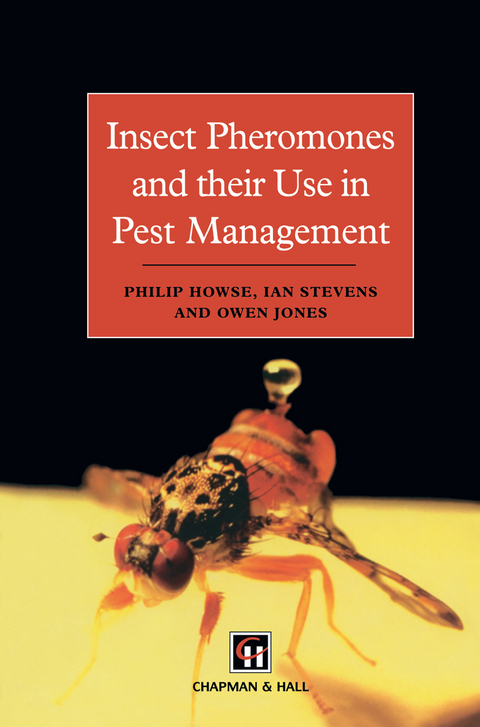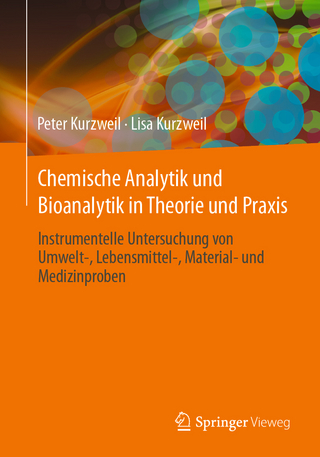
Insect Pheromones and their Use in Pest Management
Seiten
1997
Chapman and Hall (Verlag)
978-0-412-44410-4 (ISBN)
Chapman and Hall (Verlag)
978-0-412-44410-4 (ISBN)
There is now a considerable literature on chemical ecology, which had its beginnings in the study of insect pheromones. An important part of understanding insect chemical ecology involves the understanding not only of new concepts but of the vocabularies used by scientists specializing in different fields.
There is now a considerable literature on chemical ecology, which had its beginnings in the study of insect pheromones. This beginning was possible only by combining the disciplines and techniques of biology and chemistry. For a biologist, it is difficult to understand the time frames of analytical and synthetic chemistry. A compound may take days to characterize and be available in minutes from a bottle on the shelf, or it may take years to characterize and synthesize. Chemists have a similar frustration: after an intense programme of work, the insect in question may not emerge for many months. study are, however, The rewards of integrated interdisciplinary considerable, because they allow us to understand many facets of insect behaviour and consequently to control that behaviour for our own ends. In this book, we have set out to explain the results of research from chemical and biological perspectives, and see how the knowledge gained has led to novel techniques that can be used ininsect pest management and insect control. An important part of understanding insect chemical ecology involves the understanding not only of new concepts but of the vocabularies used by scientists specializing in different fields. It will be clear that the three sections of this book have been written by three different people: an insect behaviourist, an organic chemist and a biologist in industry.
There is now a considerable literature on chemical ecology, which had its beginnings in the study of insect pheromones. This beginning was possible only by combining the disciplines and techniques of biology and chemistry. For a biologist, it is difficult to understand the time frames of analytical and synthetic chemistry. A compound may take days to characterize and be available in minutes from a bottle on the shelf, or it may take years to characterize and synthesize. Chemists have a similar frustration: after an intense programme of work, the insect in question may not emerge for many months. study are, however, The rewards of integrated interdisciplinary considerable, because they allow us to understand many facets of insect behaviour and consequently to control that behaviour for our own ends. In this book, we have set out to explain the results of research from chemical and biological perspectives, and see how the knowledge gained has led to novel techniques that can be used ininsect pest management and insect control. An important part of understanding insect chemical ecology involves the understanding not only of new concepts but of the vocabularies used by scientists specializing in different fields. It will be clear that the three sections of this book have been written by three different people: an insect behaviourist, an organic chemist and a biologist in industry.
One Pheromones and Behaviour.- 1 Insect semiochemicals and communication.- 2 The role of pheromones in insect behaviour and ecology.- 3 Factors controlling responses of insects to pheromones.- 4 Bioassay methods.- Two Chemical Aspects of Pheromones.- 5 Chemical structures and diversity of pheromones.- 6 Isolation and structure determination.- 7 Synthesis of pheromones.- 8 Structure and species specificity.- Three Practical Applications of Pheromones and Other Semiochemicals.- 9 Pest monitoring.- 10 Mass trapping.- 11 Lure and kill.- 12 Mating disruption.- 13 Other uses of semiochemicals.
| Zusatzinfo | XI, 369 p. |
|---|---|
| Verlagsort | London |
| Sprache | englisch |
| Maße | 155 x 235 mm |
| Themenwelt | Naturwissenschaften ► Biologie ► Biochemie |
| Naturwissenschaften ► Biologie ► Botanik | |
| Naturwissenschaften ► Biologie ► Evolution | |
| Technik ► Lebensmitteltechnologie | |
| Weitere Fachgebiete ► Land- / Forstwirtschaft / Fischerei | |
| ISBN-10 | 0-412-44410-0 / 0412444100 |
| ISBN-13 | 978-0-412-44410-4 / 9780412444104 |
| Zustand | Neuware |
| Haben Sie eine Frage zum Produkt? |
Mehr entdecken
aus dem Bereich
aus dem Bereich
Buch | Softcover (2024)
Springer Vieweg (Verlag)
37,99 €


